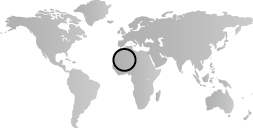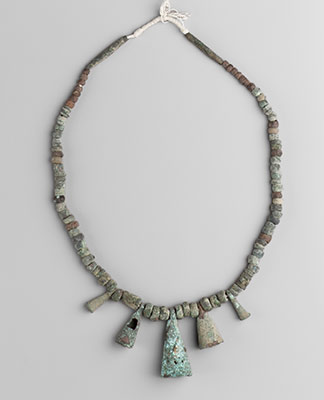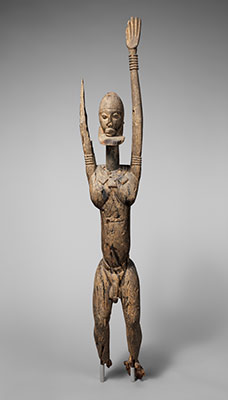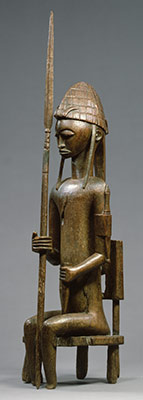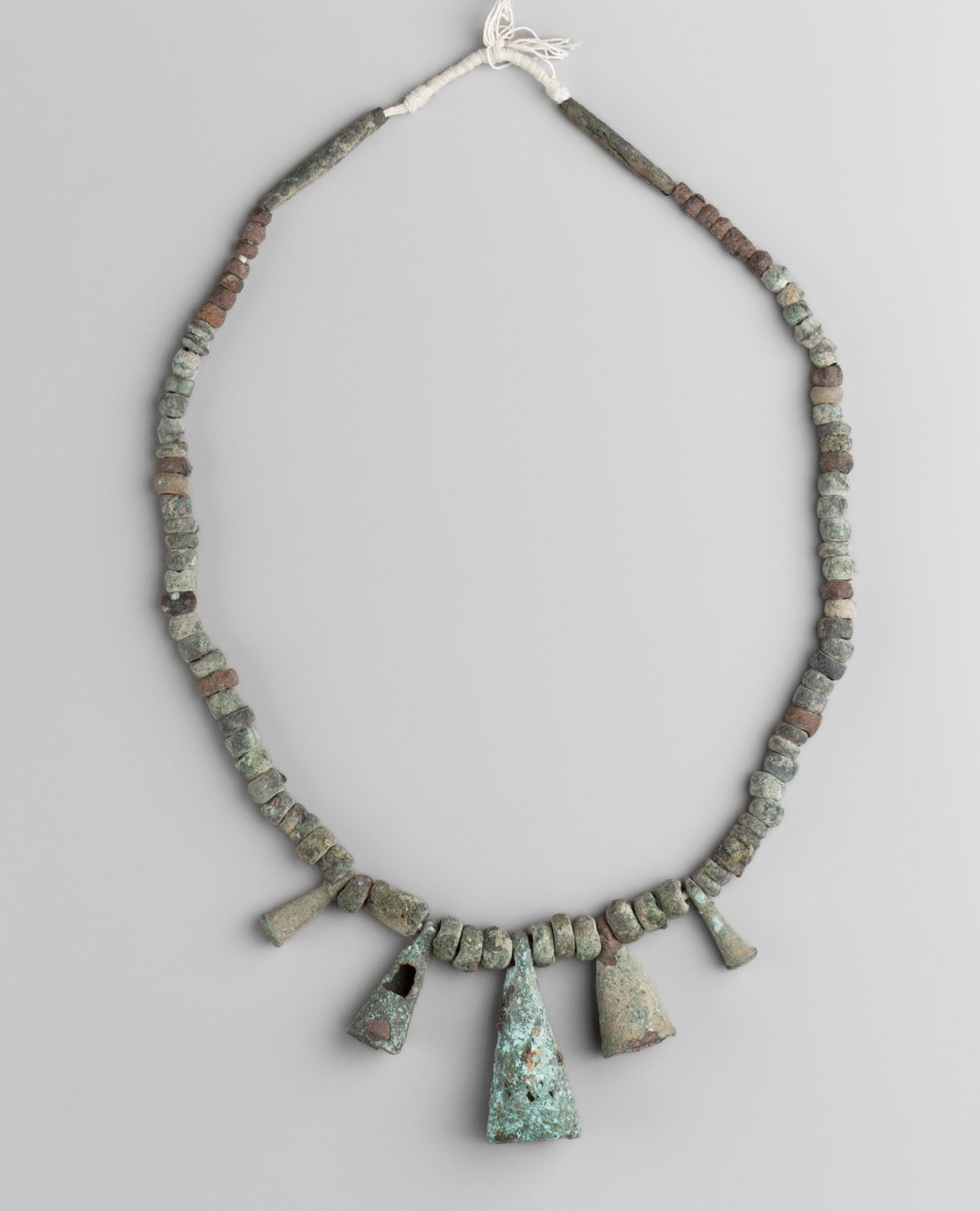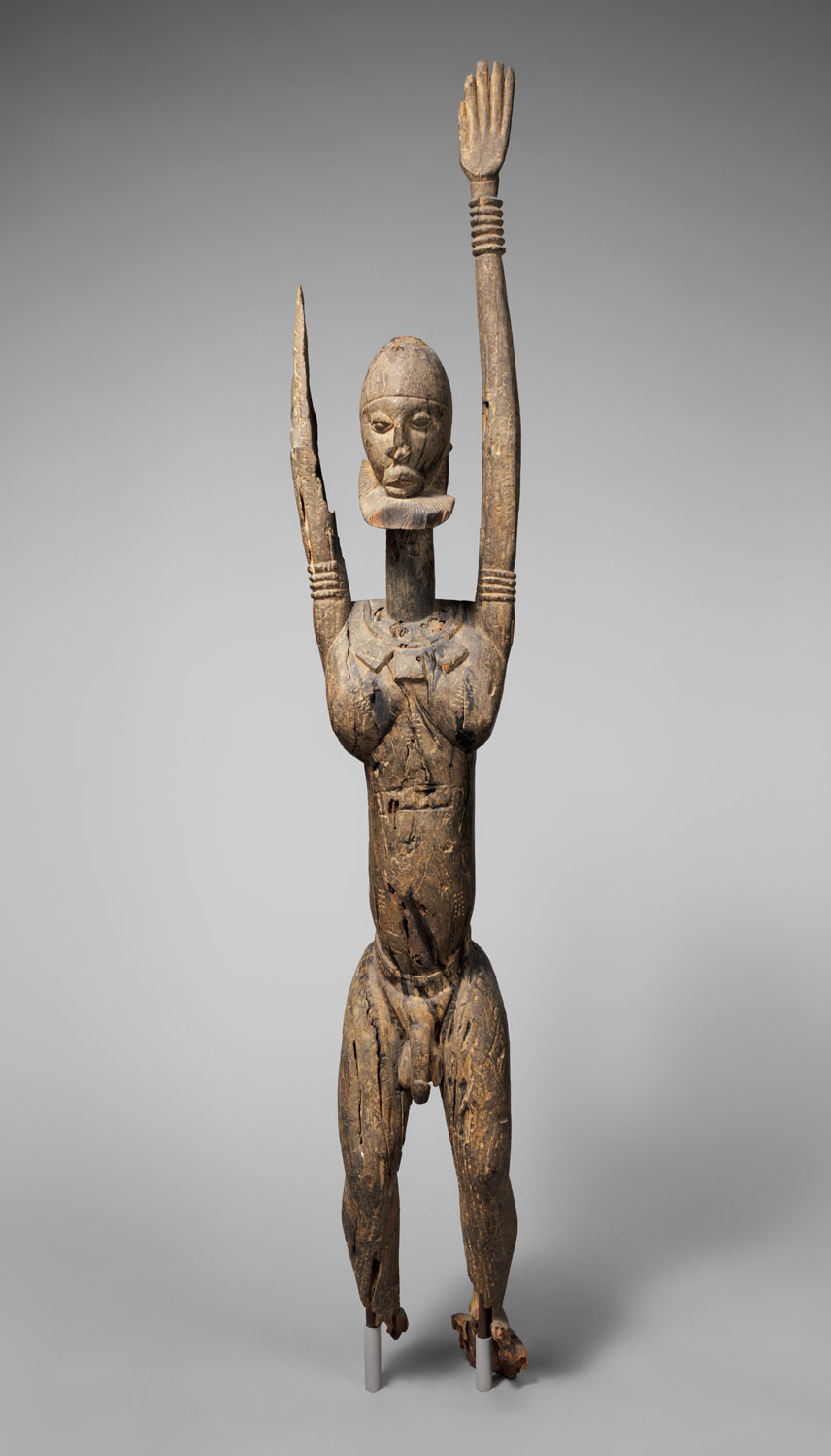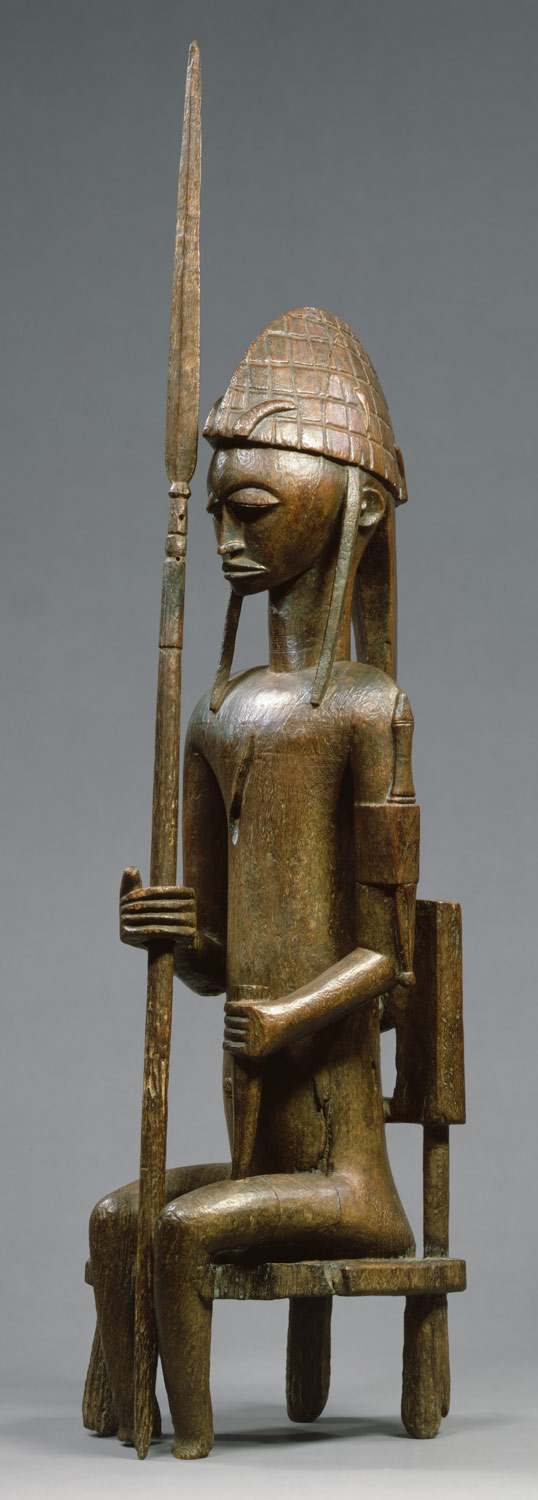The role of commercial and intellectual exchange with Islamic and Portuguese traders expands during this period. The rise of the prosperous Songhai empire results in the growth of Islamic learning in centers like Timbuktu. Some of the oldest surviving wood sculpture from sub-Saharan Africa ensues from the establishment of the artistically rich agrarian Dogon peoples in the Bandiagara Escarpment area.
Western and Central Sudan, 1400–1600 A.D.
Timeline
1400 A.D.
1450 A.D.
1450 A.D.
1500 A.D.
1500 A.D.
1550 A.D.
1550 A.D.
1600 A.D.
Overview
Key Events
-
15th–16th century
Oral history suggests that the Dogon peoples migrated from the southwest into the Bandiagara region of what is now Mali. Linguistic evidence indicates that Dogon society came to embrace the migrants and autochthonous peoples from the territories they settled. Seeking protection from marauding Fulani and Mossi cavalry, the Dogon peoples establish themselves in the least accessible territory, founding communities positioned in the overhangs and hollow spaces of the escarpments. The arid terrain of steep cliffs and rocky bluffs with few isolated expanses capable of supporting their primary crop, millet, demands that villages remain small; consequently, the Dogon never develop large cities, or any form of centralized government. Each village has a council of elders, which makes important decisions. Villages are organized along a caste system based on one’s primary occupation. Artworks reflect the Dogon people’s attention to spirits responsible for the fertility of both land and people.
-
15th–17th century
Muslim Dyula merchants establish trade posts throughout the central Sudan that link gold fields controlled by the Akan peoples in what is presently northern Ghana to trans-Saharan trade. The exchange of gold for cloth and metal wares enriches nascent Akan kingdoms such as Denkyira, Akani, and Akwamu, and introduces a system of cast brass weights based on North African prototypes that becomes an important medium of Akan artistic expression.
-
1443–1468
In a short-lived attempt to centralize the Tuareg confederations into a single kingdom, the Tuareg acquire control of the important trading centers of Timbuktu and Gao. The Tuareg are primarily a confederation of nomadic pastoralist groups. They are actively involved in the trans-Saharan trade, conducting raids on communities in the south, acquiring slaves, and selling them north in exchange for agricultural and other products. Slaves often marry into the limited sedentary Tuareg families, who cultivate palms, vegetables, and grains.
-
1465–1591
Under the reign of military leader Sonni ‘Ali, the Songhai conquer Timbuktu, thus establishing control of the region that will last more than a century. The Songhai step into the political gap left by the dissolution of the Mali empire, which erodes through a period of secession disputes and power conflicts. The Songhai defeat the Mossi to the south and the Tuareg in the north, quickly establishing dominion along the trans-Saharan trade routes, as well as in the salt and copper mines of what is now Mali.
-
1493–1528
Askia Muhammad gains world renown through his establishment of Timbuktu as a center of Islamic faith and scholarly activity. Under his leadership, the Songhai empire expands its territory, thereby increasing its control over the southern gold trade. According to oral histories, Askia Muhammad displayed his region’s wealth on a particularly ostentatious pilgrimage to Mecca.
-
1591
The sultan of Morocco dispatches a well-armed military to destroy the Songhai army and take control over the salt mines and trading routes. The Songhai have only handheld weapons, while the Moroccan invaders possess firearms, allowing them to easily crush the Songhai, bringing the period of Songhai domination to an end.
Citation
“Western and Central Sudan, 1400–1600 A.D.” In Heilbrunn Timeline of Art History. New York: The Metropolitan Museum of Art, 2000–. http://www.metmuseum.org/toah/ht/?period=08®ion=afu (October 2002)
Related
Map
